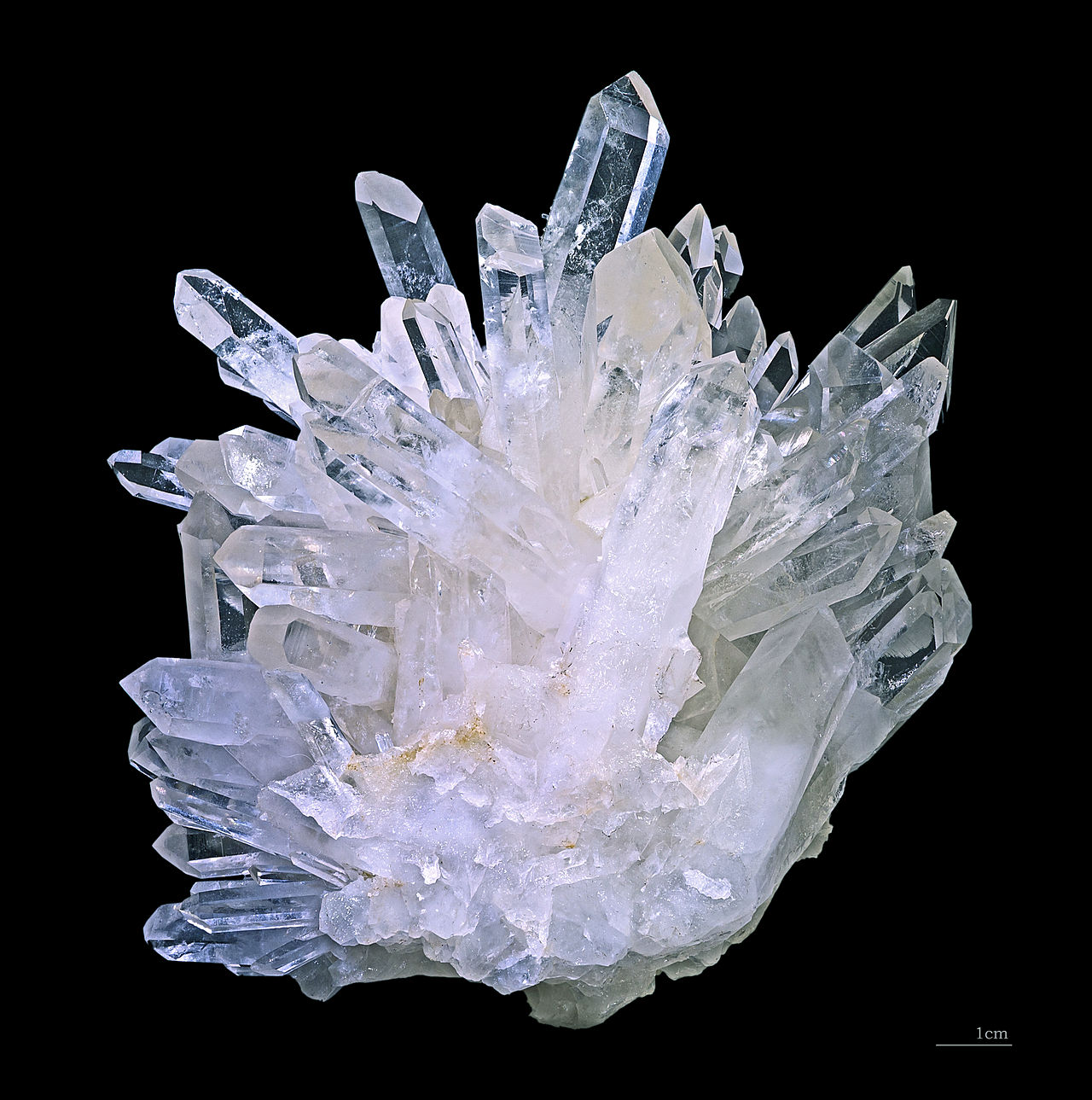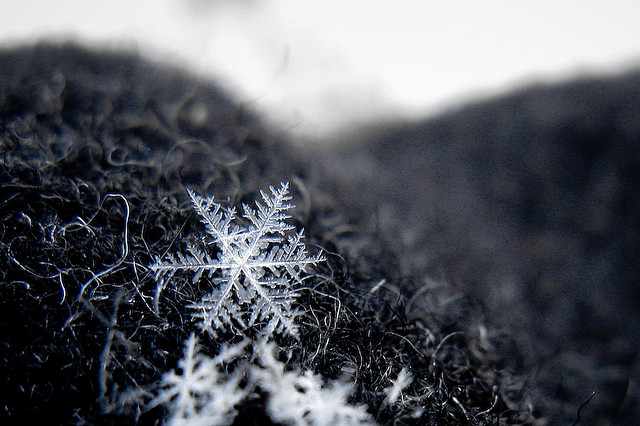Crystal formation is observable under laboratory conditions, but for most of us, crystallization must be imagined.
What sparks our imagination is the observable evidence of some crystallized object whether formed over a geologic time scale like a piece of quartz we can hold in our hand, or formed from atmospheric cooling like a snow flake.Crystallization
- The act or process by which a substance in solidifying assumes the form and structure of a crystal, or becomes crystallized.
|
|
All solids have either a highly ordered arrangement of particles or a randomly distributed arrangement of particles. Our recognition of comparative orderliness might be determined by scale.
For a stone, when it is examined, will be found a mountain in miniature.Solids with a highly ordered arrangement of particles are crystalline solids, while those with randomly distributed particles are amorphous solids.
— John Ruskin, 1818-1900
Crystalline solids have distinctively geometric shapes. By comparison, amorphous solids like coal or glass, have no discernible geometric patterns.
Diamonds, graphite, table salt and sugar are examples of crystalline solids. Crystalline solids are bounded by planes called faces. Crystal planes intersect at predictable angles.
An equal number of atoms, combined in the same way produce the same crystal forms, and the same crystal form does not depend on the nature of the atoms, but only on their number and mode of combination.
— Ellhard Mitscherlich, 1794-1863
REFERENCES
- Amorphous Solid, Wikipedia.
- Crystallization in Nature, Wikipedia
- Crystalline Solid, Wikipedia.





